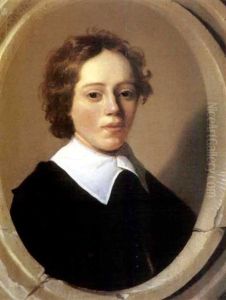Jan Daemen Cool Paintings
Jan Daemen Cool was a Dutch Golden Age painter born in Rotterdam in the late 16th century. He was active during a period known for its incredible artistic production and innovation in the Netherlands, contributing to the rich cultural heritage of the era.
Cool's life and career were set against the backdrop of the Dutch Republic's prosperity. He was likely trained in Rotterdam, where he was born, and his early works suggest that he was influenced by Flemish and Dutch masters of the time. Unfortunately, much of Cool's life is shrouded in mystery, as is the case with many artists of his time, and comprehensive details about his training, influences, and personal life are scarce.
Despite the lack of extensive records, we know that Jan Daemen Cool was a versatile artist, adept at painting portraits as well as historical and mythological scenes. His style was characterized by a strong attention to detail and a penchant for realism, which was typical of Dutch painters of the era. He was particularly skilled at capturing the textures of fabrics and the interplay of light and shadow, which gave his works a tactile and lifelike quality.
While Cool may not be as well-known as some of his contemporaries, such as Rembrandt or Vermeer, his work was appreciated in his time and provides valuable insight into the artistic and cultural milieu of the Dutch Golden Age. His paintings are part of the collection of several museums, and they continue to be studied by art historians interested in the period.
Jan Daemen Cool passed away in 1660. The exact circumstances of his death, much like many aspects of his life, remain unclear. However, his contributions to Dutch art continue to be recognized by scholars and art enthusiasts alike, and his surviving works serve as a testament to the skill and craftsmanship of artists during one of the most vibrant periods of European art.

















